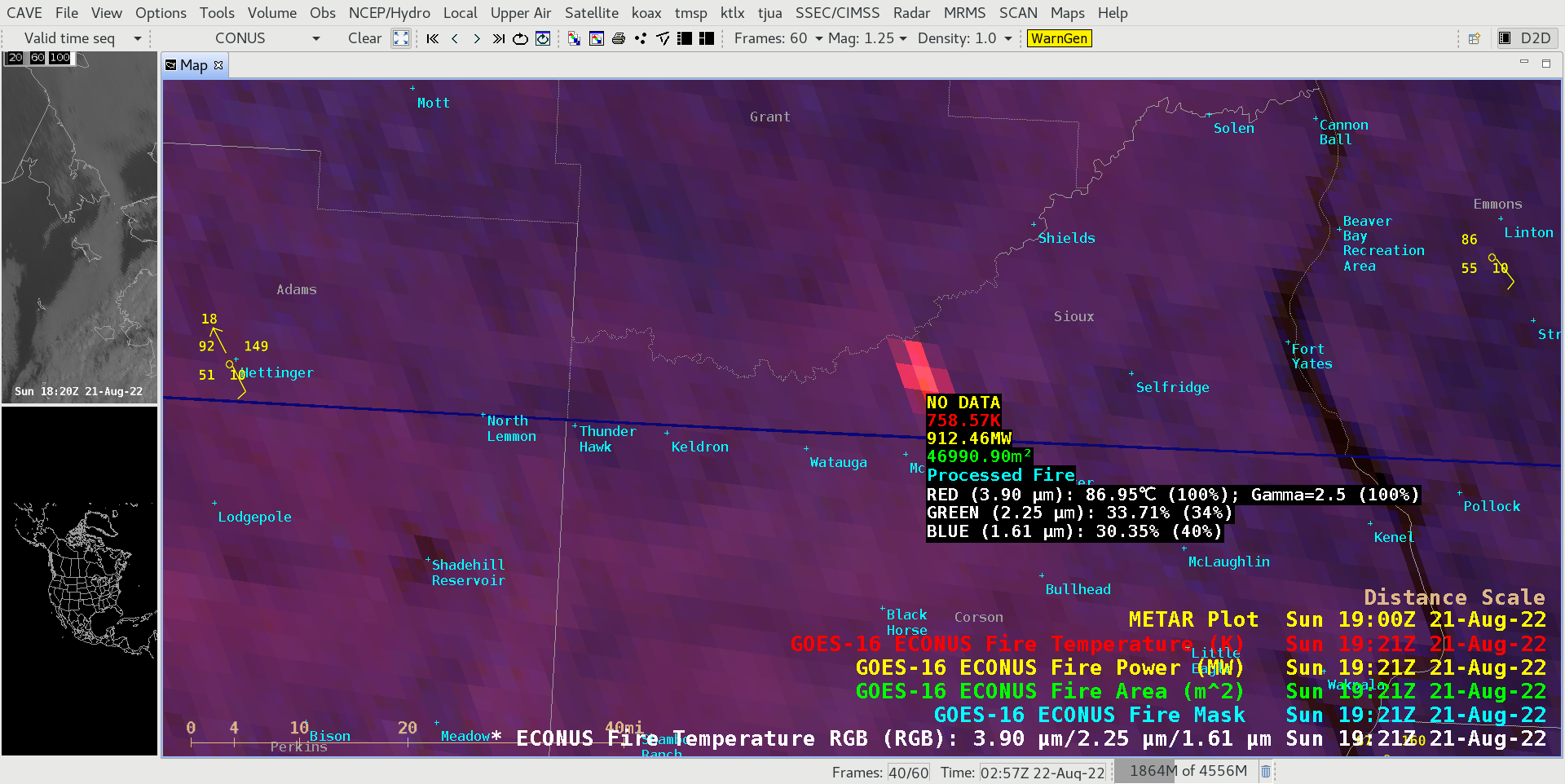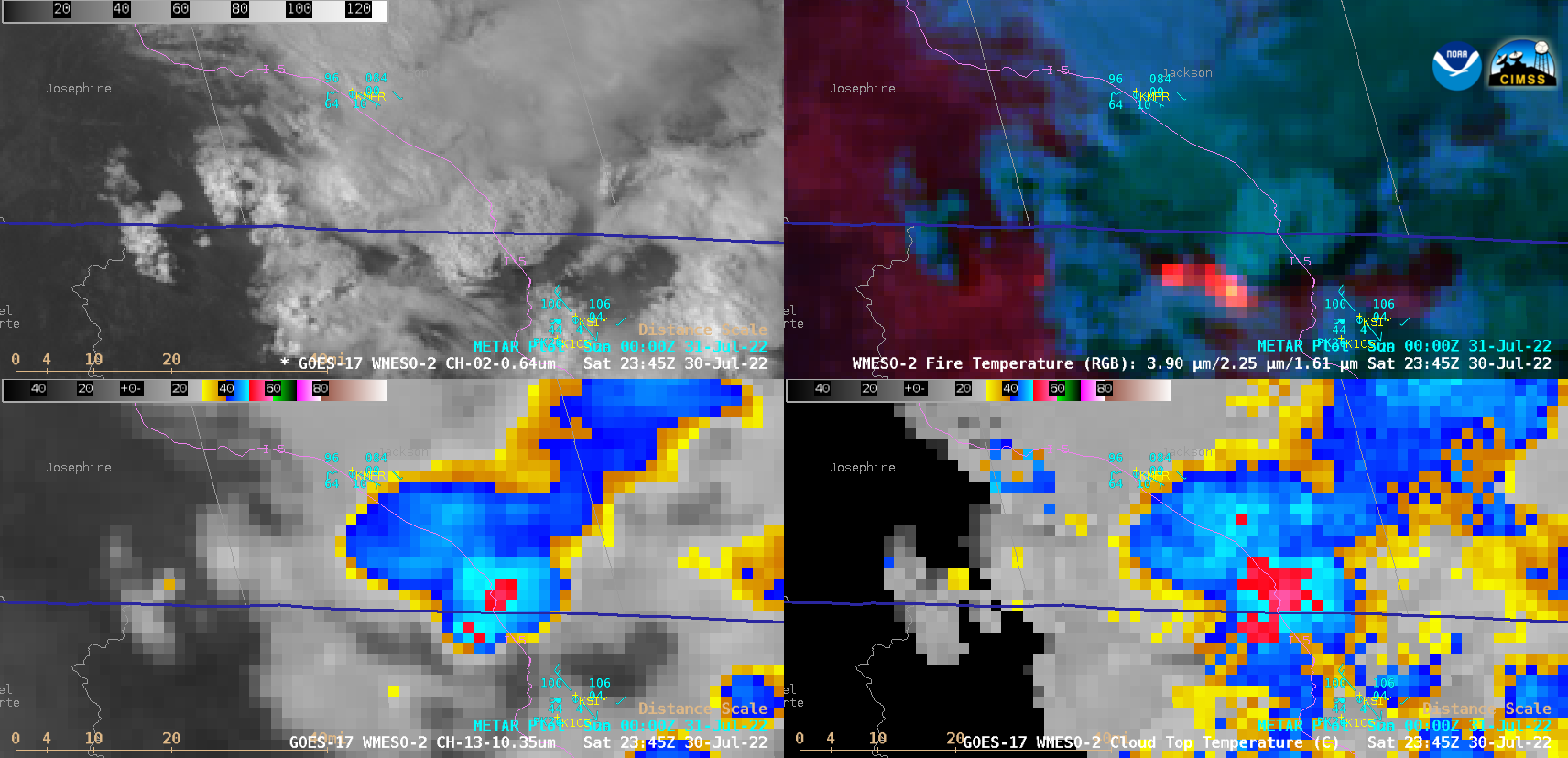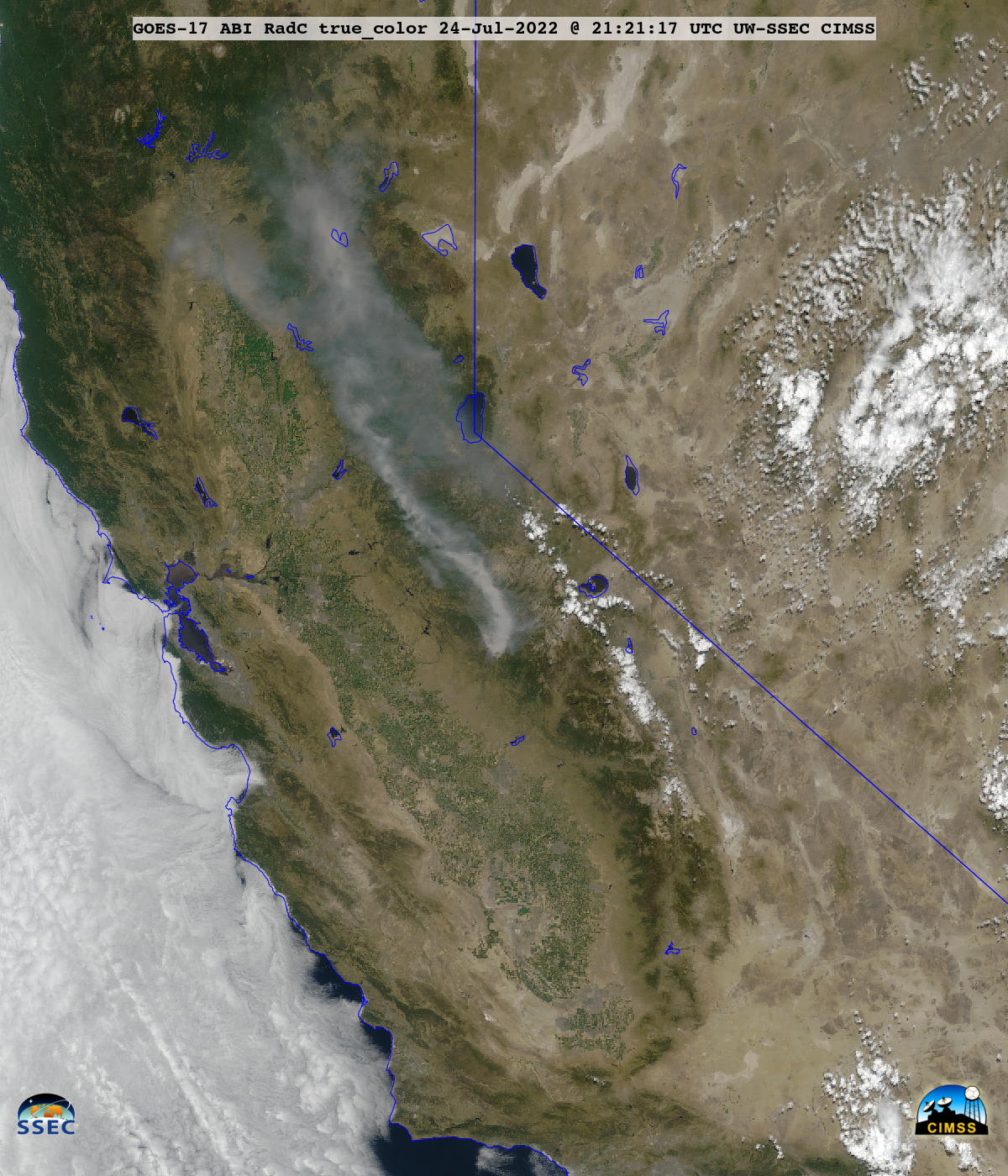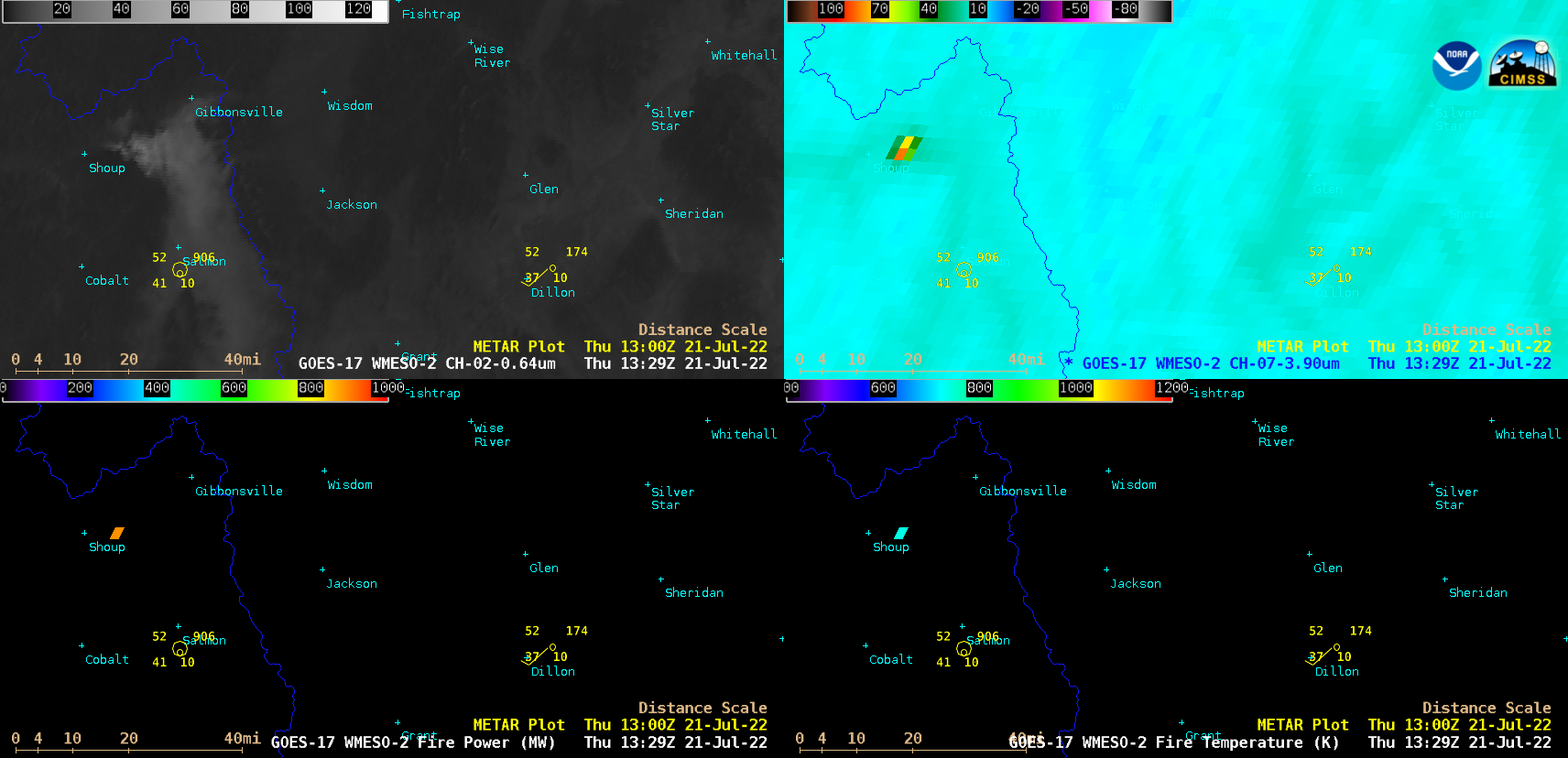Grassland fire in North Dakota

GOES-16 (GOES-East) Fire Tempera ture RGB images (above) showed the rapid north-northwestward spread of a wind-driven grassland fire across Sioux County in far southern North Dakota during the early afternoon hours on 21 August 2022. South-southeasterly winds were gusting to 17-18 knots (19-21 mph) at surrounding METAR sites during that time period.The GOES-16 Fire Temperature... Read More





